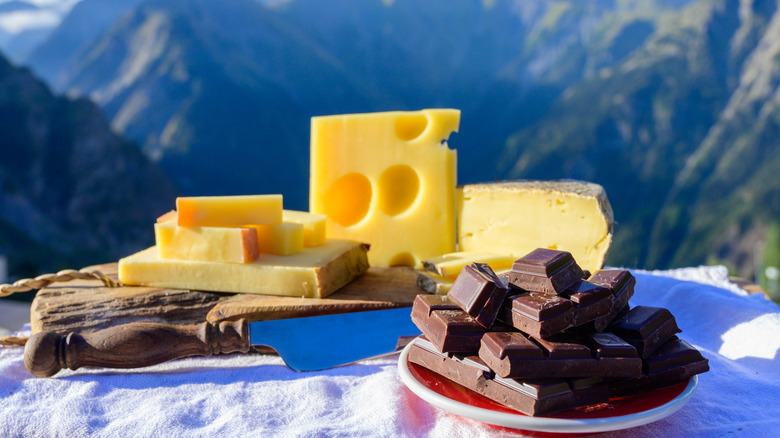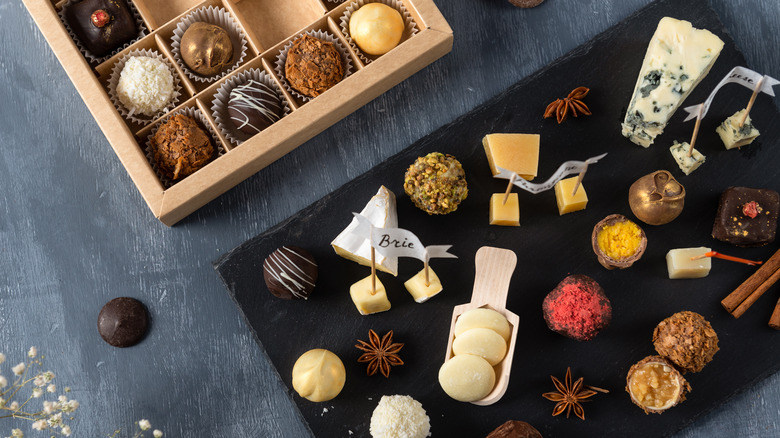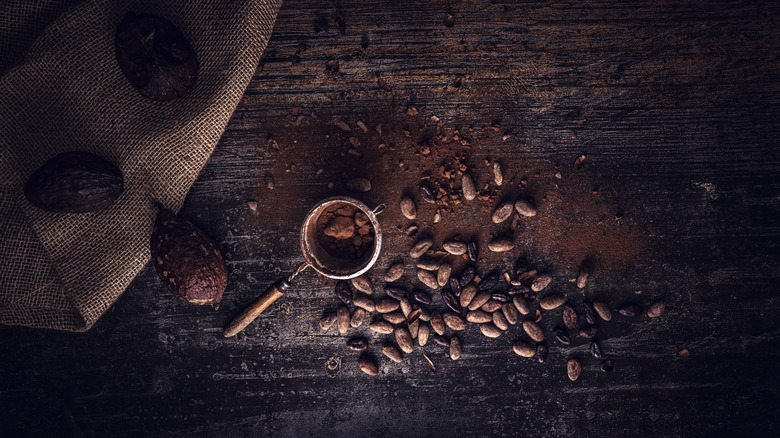The Big Mistake To Avoid When Pairing Cheese And Chocolate
Cheese and chocolate can make for a delectable pairing due to the complex flavor profiles found in both products, which are heavily influenced by where the ingredients are sourced. But while cheese and chocolate can be a match made in heaven, pairing them isn't as simple as grabbing your favorites, putting them together, and hoping for the best. We asked for advice from an expert, Matthew Rose, ACS CCP, CCSE, partner at Fairfield and Greenwich Cheese Company, and he shed some light on one easy mistake to make when pairing cheese and chocolate — not keeping it simple.
"I would recommend starting more conservatively for the sake of simplicity. A chocolate with added flavor elements can be an exciting proposition, however when you add an entirely new flavor to an already complex combination of flavors, that further complicates the pairing balance," Rose shared with Daily Meal.
Certain cheese and chocolate pairings have blown up on the internet in recents years, including one questionable trend of putting feta cheese in chocolate cookies. But here's why Rose believes the pairing process is more complex than just mashing cheese with chocolate and calling it a day.
How proper cheese and chocolate pairing works
"Each different chocolate producer, just like producers of cheese, has their own esoteric characteristics and really requires personal experimentation," Rose shared. Just as the world of cheese includes countless flavors and textural characteristics from fresh to aged, pungent to mild, so does the world of chocolate.
"Cheese and chocolate have many overlapping flavor profiles and this can yield unpredictable results: Tangy, fruity, roasty, nutty, etc," cheese expert Matthew Rose elaborated in an exclusive interview with Daily Meal. With this in mind, try focusing on the intensity of the cheese and chocolate itself rather than the exact flavors. For example, a bold selection like blue cheese can take on an intense dark chocolate, while delicate, mild cheeses would be overpowered.
If you find yourself in front of a cheese and chocolate board where they have completely opposite characteristics, you can try finding a flavor bridge to make it work. A flavor bridge is an extra ingredient that helps connect two contrasting ones, with honey being a common example.
Finding and buying high-quality chocolate
So how do you discover chocolate brands with the highest quality ingredients, worthy of pairing with your quality cheese? "The two factors to pay attention to when shopping for high-quality, bean-to-bar chocolate are the source of the cacao and the percentage of cocoa solids," Matthew Rose advised. "One of the reasons we love chocolate is because it is one of those amazingly complex foods that has terroir, the French term for a taste of place, just as wine and cheese do." This means the taste of chocolate is informed by the ingredients' places of origin.
While the science of cocoa solids, the second factor Rose notes, can get a little complex, it all boils down to this. "As the percentage of the cocoa solids rises, the chocolate bar will have a higher concentration of flavor as well as a more intense acidity and a firmer, dryer texture," Rose said. This is what makes dark chocolate dryer and more acidic, with greater than 50% cocoa solids, and what makes white chocolate more mild and sweet, with 0% cocoa solids. Essentially, don't make the mistake of underestimating the respective complexities of your cheese and chocolate. With a little research and attention to detail you can create unforgettable pairings.


